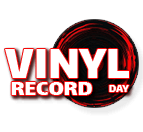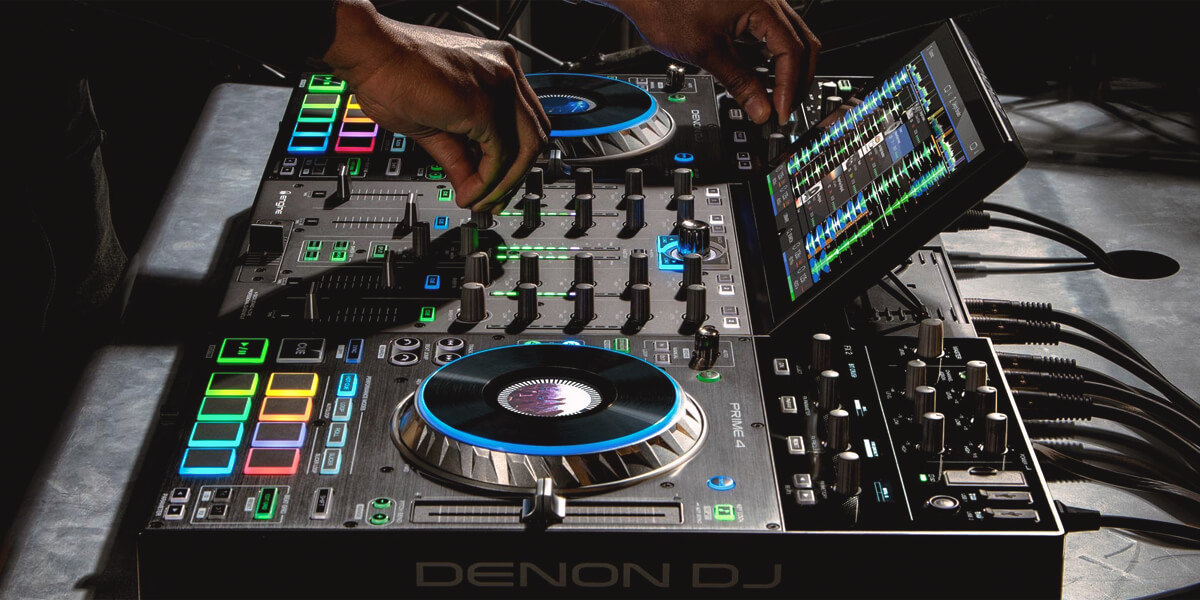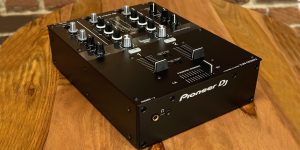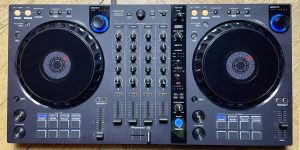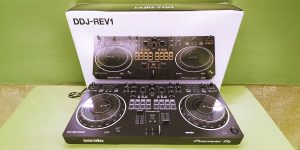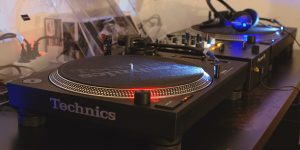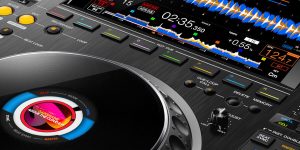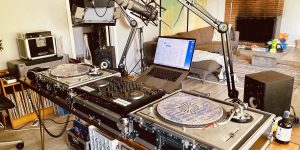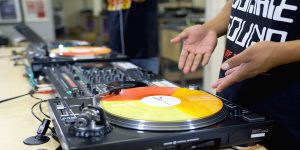Welcome to the intersection of vintage vibes and cutting-edge audio: the world of Digital Vinyl Systems. What is a DVS? Imagine harnessing the tactile pleasure of spinning vinyl records with digital files’ flexibility and sound quality. DVS, in essence, allows this fusion, transforming your classic turntables and mixers into digital music controllers, a thrilling and mesmerizing innovation.
My first tryst with a DVS was unforgettable. A DJ spun a record at a cozy music studio nestled between stacks of vinyl and modern gear. Anticipating the familiar analog hum, I was instead greeted by a pristine digital sound. This intriguing mix of vinyl manipulation and digital accuracy sparked my fascination with DVS.
As we progress, we’ll peel back the layers of DVS, from its function and key components to its various types. So, whether you’re a budding DJ, a music aficionado, or just intrigued, buckle up for a deep dive into DVS, the perfect blend of nostalgia and innovation!
Transition to digital: the birth of digital vinyl systems (DVS)
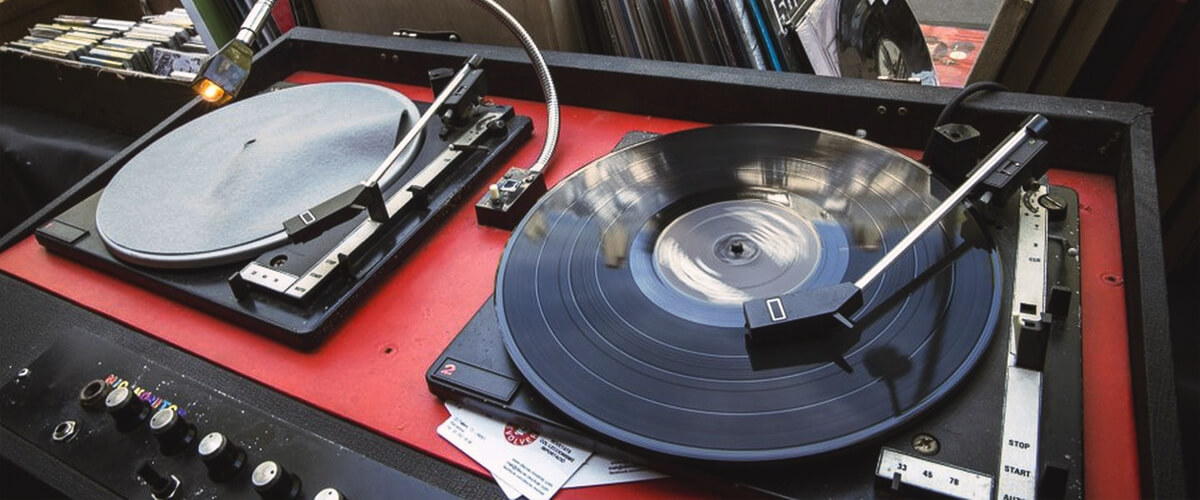
The late 20th century marked a radical shift in the music industry – the leap from analog to digital. Yet, for DJs who had mastered the art of manipulating vinyl, losing that tactile interaction was unimaginable.
The initial concept of DVS emerged in the late ’90s from a collaboration between a visionary software company, N2IT, and audio equipment heavyweight, Stanton Magnetics. Their joint venture culminated in the creation of ‘FinalScratch’, the world’s first DVS. Released in 2001, it opened a new chapter in the DJing landscape, allowing users to manipulate digital audio files using traditional turntables and mixers.
However, the road to mainstream acceptance wasn’t smooth. Early versions were plagued with latency issues and required specialized hardware, limiting their accessibility. But the potential of DVS was unmistakable. Companies like Serato and Native Instruments took notice, releasing their own improved DVS versions – Scratch Live and Traktor Scratch, respectively.
With technological refinements and the evolution of DJing culture, DVS found its footing in time. Today, it stands as a testament to innovation and nostalgia coexisting, enabling DJs to utilize their vinyl-spinning skills while reaping the benefits of digital technology.
Understanding digital vinyl systems
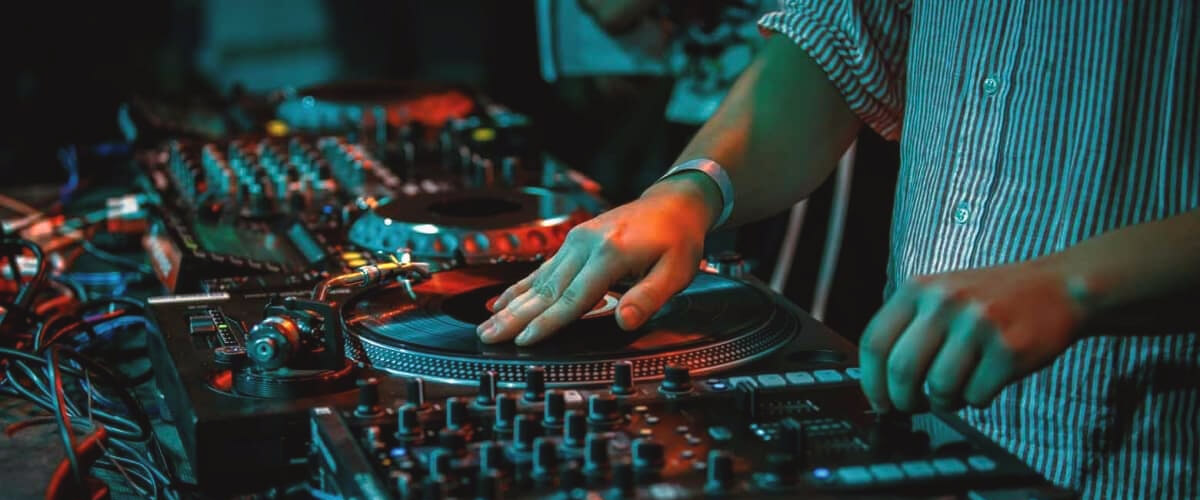
Let’s now delve into the intricacies of Digital Vinyl Systems. We’ll explore how they function, their key components, and the diverse variations that cater to different user needs and preferences.
How does a DVS work?
At its core, a DVS system works by using specially coded vinyl records or CDs, referred to as “control” records or discs. These control records are spun on regular turntables or CD players, but instead of containing audio, they emit a specific time-coded signal. This signal is picked up by the system’s sound card and translated into a binary or digital code.
This process is where the DVS magic happens. The digital code corresponds to a music file stored on a connected computer. As the DJ manipulates the control record—scratching, rewinding, or adjusting the pitch—the DVS mimics these movements on the digital track, creating a seamless interaction as if the DJ were using regular vinyl or CDs.
This brings us to the primary difference between analog and digital vinyl. Traditional analog vinyl records carry actual sound grooves that a needle reads to produce sound. A digital vinyl, used in a DVS, carries time-coded signals instead, which control digital audio files. The allure of DVS lies in its capacity to mimic the tactile feel of analog DJing while providing the convenience and versatility of digital music.
Key components of a DVS
To truly grasp how a Digital Vinyl System functions, it’s importantl to get acquainted with the components that bring the DVS magic to life. Let’s dissect these pivotal parts:
- Control vinyl/CD: This is the special record or disc used on the turntable or CD player. It doesn’t contain music but a time-coded signal translated into digital data.
- Turntables/CD players: Traditional or CD players spin the control vinyl or CD. The movements made on these devices manipulate the digital audio files.
- DVS software: This software reads the signal from the control vinyl or CD and uses it to manipulate the digital music file on your computer. Popular DVS software includes Serato DJ, Traktor Pro, and Rekordbox.
- Sound card or DVS interface: This is the hardware that receives the time-coded signal from the turntable or CD player and sends it to the computer. Some DJ mixers come with a built-in DVS interface.
- Computer: The digital music files being manipulated reside on a connected computer, waiting to be played, paused, and spun back at the DJ’s command.
- Audio system: The output from the DVS is sent to an audio system – be it speakers, an amplifier, or headphones – for playback.
Variations and types of DVS
While all Digital vinyl systems hinge on the same fundamental concept of controlling digital music files with traditional DJ equipment, the variations primarily lie in the software used, and to a lesser extent, in the hardware.
The three heavy hitters in the DVS software arena are Serato DJ, Traktor Pro, and Rekordbox, each offering unique strengths.
Serato DJ, hailing from New Zealand, is revered for its simplicity, stability, and extensive hardware compatibility. It’s a go-to for many professional DJs, especially those into hip-hop and scratch DJing.
From the house of Native Instruments, Traktor Pro makes a mark with its advanced features, such as remix decks and stem mixing. It offers creative possibilities that stretch beyond traditional DJing, making it a favorite amongst DJs who love to experiment.
Pioneer DJ’s Rekordbox is another noteworthy contender, specifically designed to work seamlessly with Pioneer’s range of DJ hardware. Its standout feature is the ability to prepare tracks on the software and export them to USB for use with standalone Pioneer decks, offering a hybrid solution.
As for the hardware, while the classic setup includes a pair of turntables or CD players and a mixer, variations exist. Some DJs might opt for a DVS-enabled controller for an all-in-one solution, while others might add additional components like drum machines or samplers to their setup for enhanced creative freedom.
In essence, the types of DVS depend on the DJ’s individual style, preferred software, and hardware requirements. The beauty of DVS lies in its flexibility, allowing DJs to craft a digital-meets-analog experience that suits their artistic vision.
